
How to Use DS18B20 1-Wire Temperature Sensor: Examples, Pinouts, and Specs
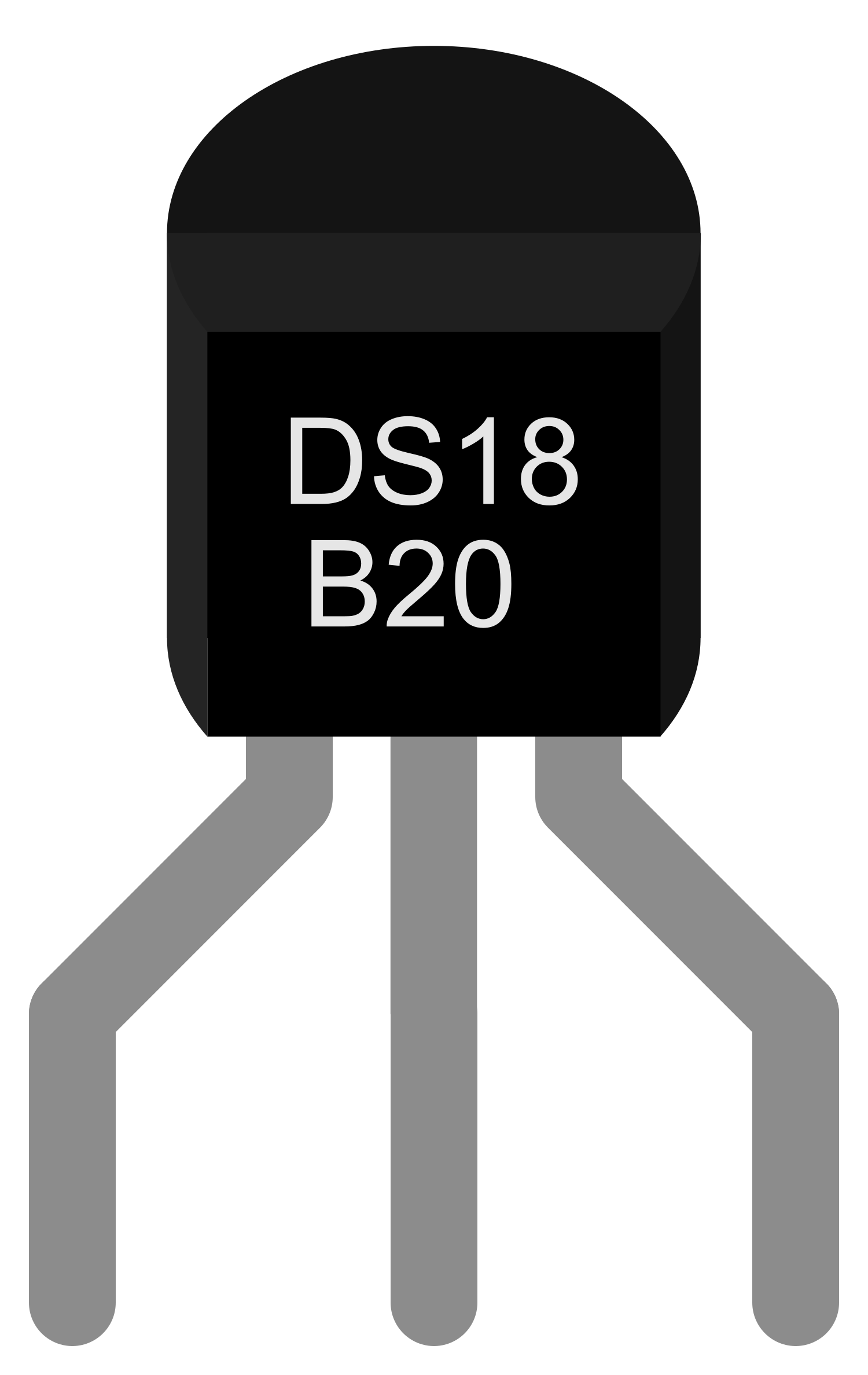
 Design with DS18B20 1-Wire Temperature Sensor in Cirkit Designer
Design with DS18B20 1-Wire Temperature Sensor in Cirkit DesignerIntroduction
The DS18B20 1-Wire Temperature Sensor is a compact digital sensor that provides temperature measurements in a digital format over a 1-Wire interface. This sensor is widely used in a variety of applications, including HVAC environmental controls, temperature monitoring systems inside buildings, equipment or machinery, and process monitoring and control systems.
Explore Projects Built with DS18B20 1-Wire Temperature Sensor
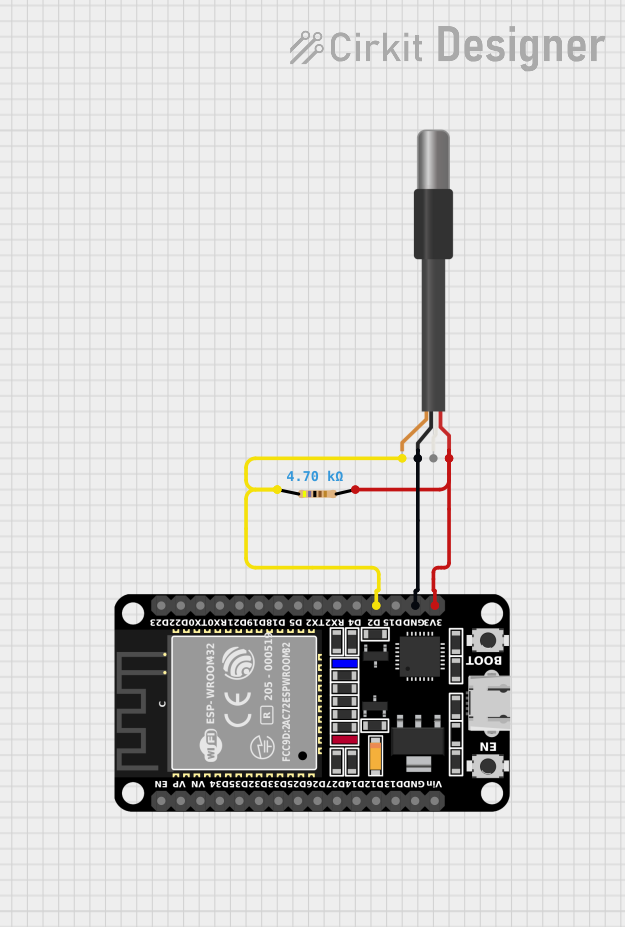
 Open Project in Cirkit Designer
Open Project in Cirkit Designer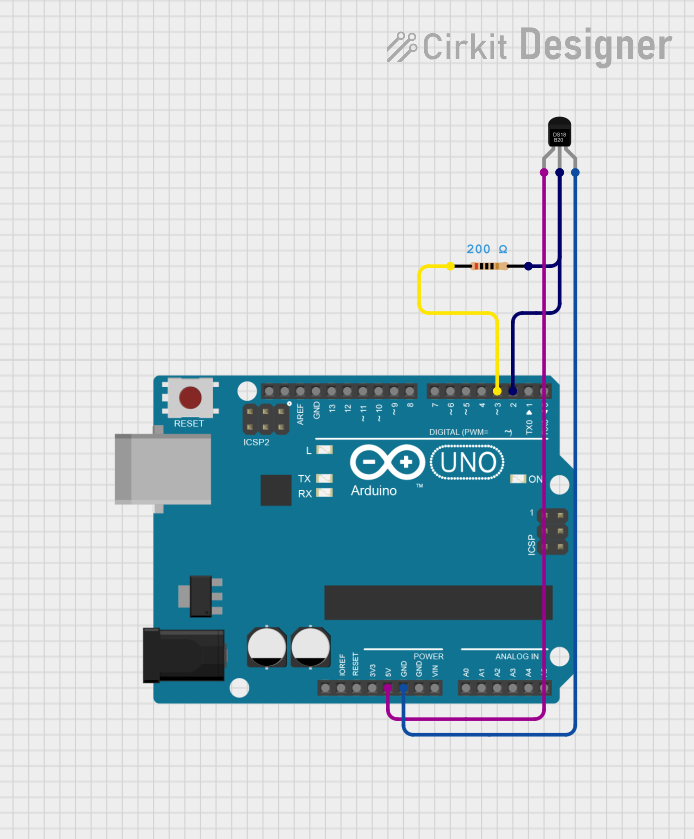
 Open Project in Cirkit Designer
Open Project in Cirkit Designer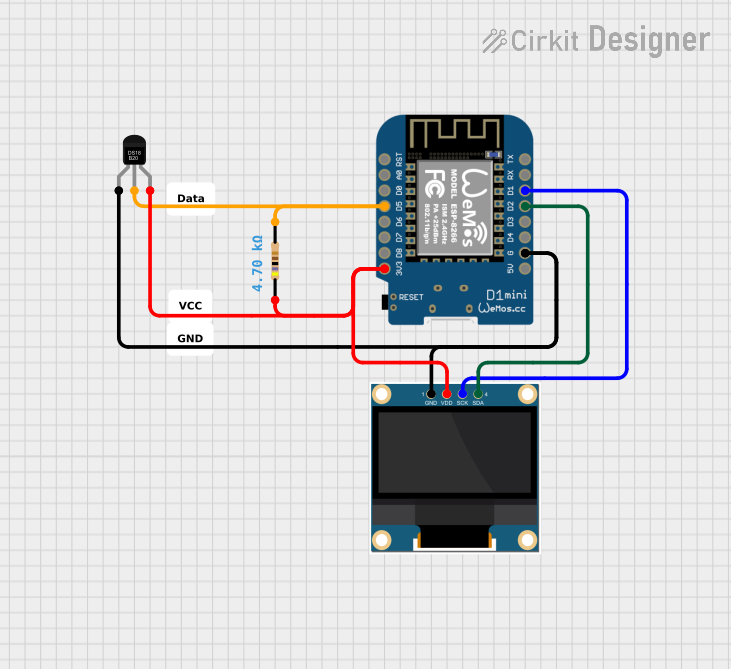
 Open Project in Cirkit Designer
Open Project in Cirkit Designer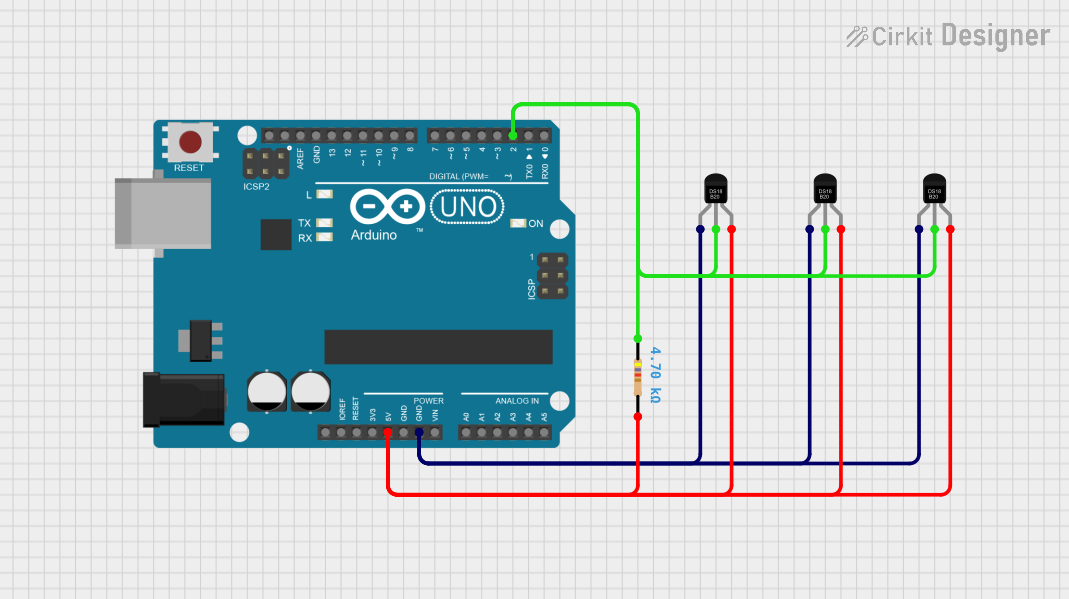
 Open Project in Cirkit Designer
Open Project in Cirkit DesignerExplore Projects Built with DS18B20 1-Wire Temperature Sensor

 Open Project in Cirkit Designer
Open Project in Cirkit Designer
 Open Project in Cirkit Designer
Open Project in Cirkit Designer
 Open Project in Cirkit Designer
Open Project in Cirkit Designer
 Open Project in Cirkit Designer
Open Project in Cirkit DesignerCommon Applications and Use Cases
- Home automation systems
- Weather stations
- Industrial temperature monitoring
- Aquarium or terrarium temperature control
- Food and beverage temperature tracking
Technical Specifications
Key Technical Details
- Supply Voltage: 3.0V to 5.5V
- Operating Temperature Range: -55°C to +125°C (-67°F to +257°F)
- Accuracy: ±0.5°C (from -10°C to +85°C)
- Resolution: Selectable from 9 to 12 bits
- Unique 64-bit Serial Code: For multi-sensor networks
- Conversion Time: 750ms at 12-bit resolution
Pin Configuration and Descriptions
| Pin Number | Name | Description |
|---|---|---|
| 1 | GND | Ground pin, connected to the system ground |
| 2 | DQ | Data pin, 1-Wire communication line |
| 3 | VDD | Power supply pin, 3.0V to 5.5V |
Usage Instructions
How to Use the Component in a Circuit
- Power Supply: Connect the VDD pin to a 3.0V to 5.5V power supply.
- Ground: Connect the GND pin to the ground of the power supply.
- Data Line: Connect the DQ pin to a digital input/output pin on your microcontroller.
- Pull-up Resistor: Attach a 4.7kΩ pull-up resistor between the DQ pin and the VDD pin to ensure proper communication on the 1-Wire bus.
Important Considerations and Best Practices
- Ensure that the power supply is stable and within the specified voltage range.
- Use a pull-up resistor on the DQ line to prevent data corruption.
- Avoid long wire runs to minimize resistance and potential communication errors.
- For multiple sensors on the same 1-Wire bus, ensure each sensor has a unique serial code.
Example Code for Arduino UNO
#include <OneWire.h>
#include <DallasTemperature.h>
// Data wire is connected to Arduino digital pin 2
#define ONE_WIRE_BUS 2
// Setup a oneWire instance to communicate with any OneWire device
OneWire oneWire(ONE_WIRE_BUS);
// Pass oneWire reference to DallasTemperature library
DallasTemperature sensors(&oneWire);
void setup() {
Serial.begin(9600);
sensors.begin(); // Start up the library
}
void loop() {
sensors.requestTemperatures(); // Send command to get temperatures
float temperatureC = sensors.getTempCByIndex(0);
Serial.print("Temperature is: ");
Serial.print(temperatureC);
Serial.println(" °C");
delay(1000); // Wait 1 second before next reading
}
Troubleshooting and FAQs
Common Issues
- Sensor not responding: Ensure the pull-up resistor is correctly placed and the power supply is within the specified range.
- Inaccurate readings: Check for proper grounding and stable power supply. Ensure the sensor is not placed near heat sources that could affect its readings.
- Multiple sensors interference: Verify that each sensor has a unique serial code and that the 1-Wire bus is properly configured.
Solutions and Tips for Troubleshooting
- Double-check wiring, especially the pull-up resistor on the DQ pin.
- Use the
search()function from the OneWire library to confirm the presence and addresses of all DS18B20 sensors on the bus. - Ensure that the Arduino library versions for OneWire and DallasTemperature are up to date.
FAQs
Q: Can I use the DS18B20 sensor without an external power supply?
A: Yes, the DS18B20 can operate in "parasite power" mode, where it draws power from the data line. This requires only two wires: the DQ and GND pins.
Q: How many DS18B20 sensors can I connect to a single microcontroller pin?
A: You can connect many sensors to a single pin, but the exact number depends on the quality of your wiring and the pull-up resistor. It's important to ensure that each sensor has a unique address.
Q: How do I set the resolution of the DS18B20 sensor?
A: The resolution can be set using the setResolution() function provided by the DallasTemperature library. The resolution can be set from 9 to 12 bits, with higher resolution providing greater accuracy but slower response times.